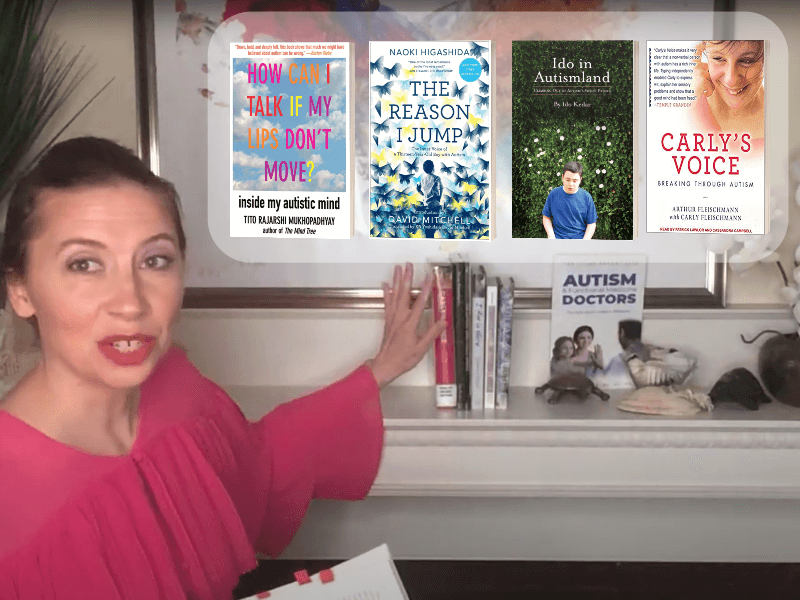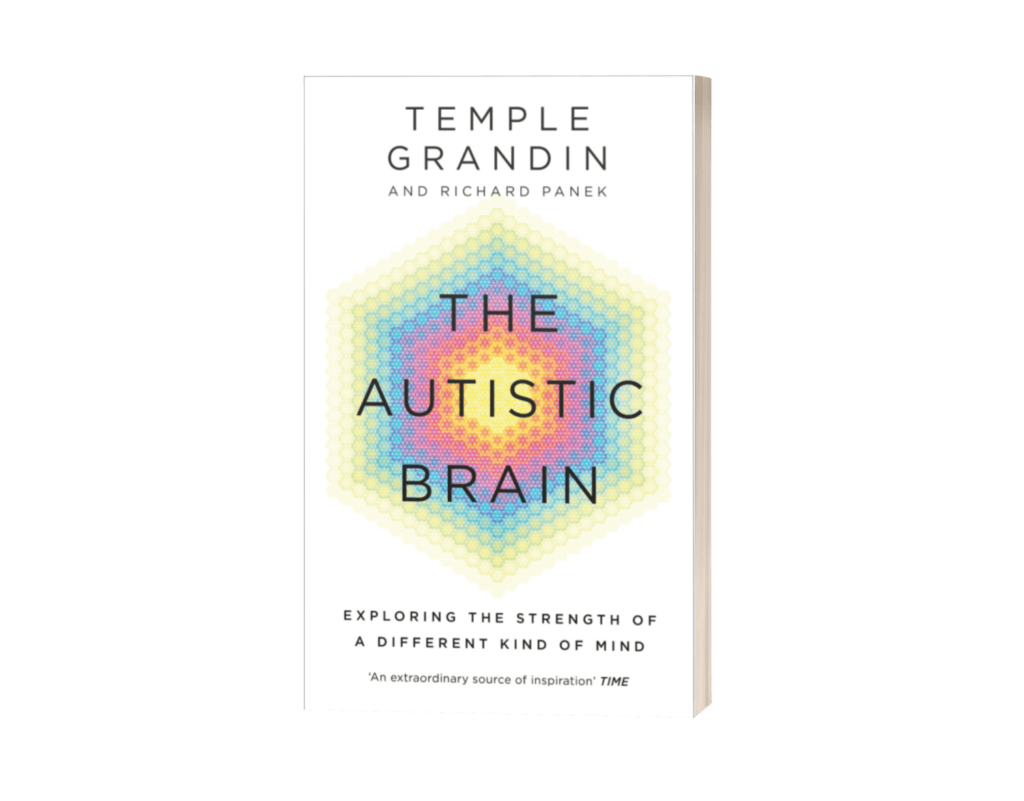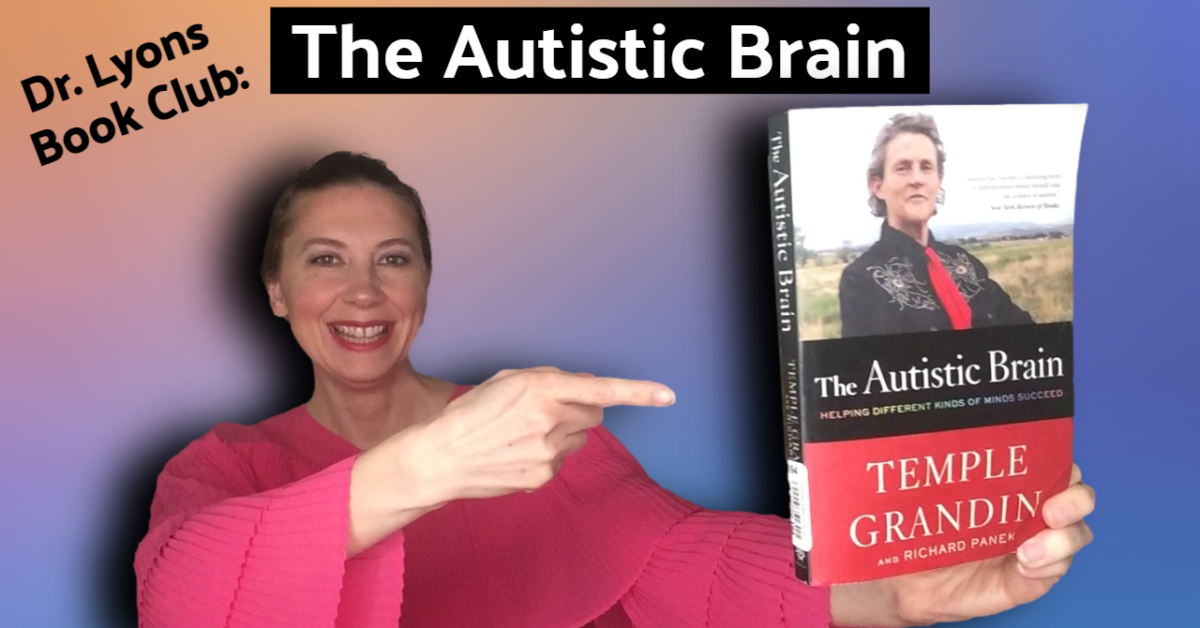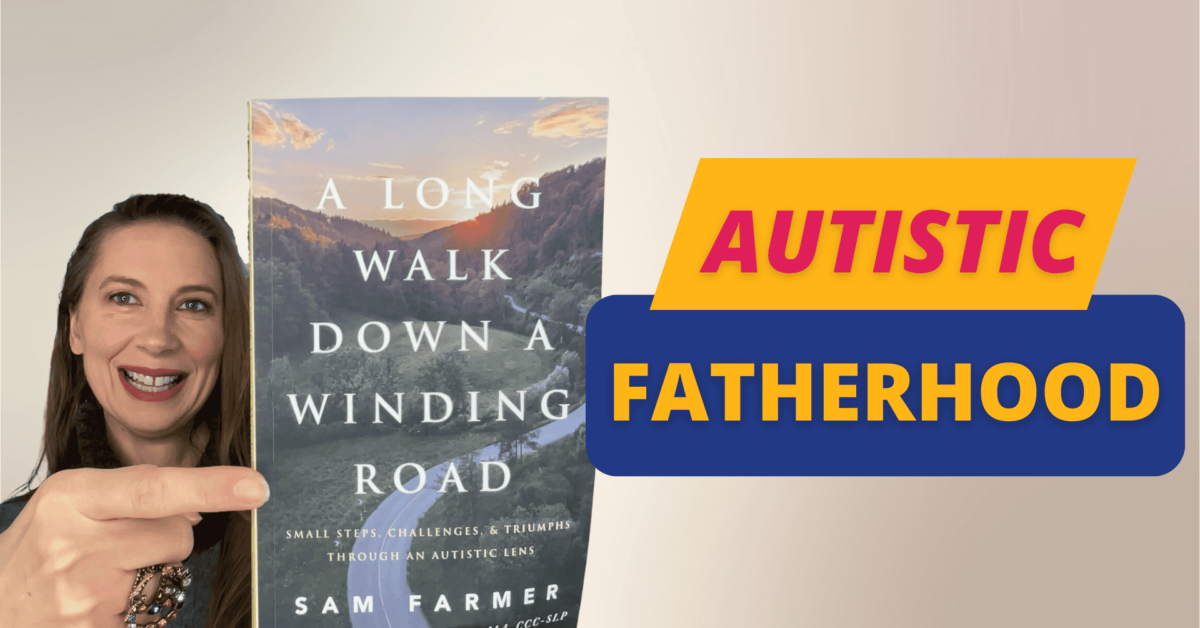There’s a lot of things about autism that Temple Grandin herself admits to being wrong about. Let’s find out about that in this book club post:
The Autistic Brain: Thinking Across the Spectrum
-Temple Grandin, -Richard Panek
Temple Grandin is probably the most well-known person with autism. She has been a fantastic self-advocate. She’s written many books about autism and other topics, too. She’s a New York Times best-selling author. She didn’t speak until she was three and a half years old. She has a master’s and Ph.D. She’s a designer of livestock handling facilities and a professor at Colorado State University. So this month’s book club is all about the autistic brain, and that’s a book that she wrote.
The Mistake
The first part is that she wrote Thinking in Pictures in 1995. And she says:
“I mistakenly thought that everyone on the autism spectrum was a photorealistic visual thinker like me. When I started interviewing other people about how they recalled information. I realized I was wrong.”
She now goes on to say what she believes. She says, “I theorized that there were three types of specialized thinking and I was ecstatic when I found several research studies that verified my thesis. Understanding what kind of thinker you are can help you respect your limitations and just as important, take advantage of your strengths.”
So she thought everyone with autism thought a particular way. And now she has revised that based on research studies and she’s saying that there are three ways that the autistic brain thinks!
The Autistic Brain Isn’t broken
A great quote from Temple Grandin from the book is:
“Autistic brains aren’t broken. My own brain isn’t broken. My circuits aren’t ripped apart. They just didn’t grow properly.”
She continues, “But because my brain has become fairly well known for its various peculiarities, autism researchers have contacted me over the years to ask permission to put me in the scanner or that, and I’m usually happy to oblige. As a result of these studies, I’ve learned a lot about the inner workings of my own brain.”
And she does go into a lot about different scans that she does have on her brain, how her brain is particularly connected, areas that are larger than, let’s say, “the normal brain”, I hate using that kind of phrase because what brain is really normal!
But she has this complete understanding of how her brain has grown and what it is. So a lot of times that she reads research studies, she relates it back to her own brain just because she has such a quantification of how her brain has grown. So if you’re interested in learning more about how Temple Grandin’s brain is, then this definitely is the book for you.
Your Child’s “Natural” Development
This one section that she writes about, about the natural development between the ages of one and two of the brain and babbling many times.
My clients’ children go through a phase like this when speaking is difficult. We start addressing a lot of different health issues. Then they have this kind of almost babbling stage that they didn’t go through when they were a child in the normal developmental phase. So it’s really great that it’s discussed here.
It’s not discussed in the terms of when someone is improving their health, when someone is catching up developmentally. But it’s really important to link these two together because a lot of times parents wonder when their children are starting to get healthier and they’re catching up developmentally.
They wonder that it is kind of weird for, let’s say an 11-year-old to be babbling. But a lot of times children are going through different developmental stages as they catch up just much later in life than typical. OK, let me read this:
“So between birth in the age of one, infants engage in two activities that developmental researchers call verbal babbling and motor babbling.”
“Verbal babbling refers to the familiar act of babies making noises to hear what they sound like. Similarly, motor babbling refers to actions such as waving a hand just to watch it move. During this period, when babies are figuring out how to engage with the world, their brains are actually building connections to make that engagement possible. During verbal babbling, fibers are growing to make the connection between what-you-are-hearing and what-you-are-saying parts of the brain during motor babbling fibers are growing to make the connection between what-you-are-seeing and what-you-are-doing parts of the brain.”
So there are different areas of the brain for speaking, we all just kind of take it for granted. But there are many different areas of the brain that have to function synergistically for speech. To be purposeful and functional and for it to evolve to more into communication, not just using words.
She goes on further to write, “…then between the ages of one and two children reach a stage where they can say single words. What’s happening in the child’s brain at this point is that fibers are forming an interlink between those two fiber systems that were connected during the verbal and motor babbling period. The brain is connecting what you are seeing with what you were saying until out pops – ‘Mama’, ‘Dadda’, ‘Ball’, and so on…”
So this is a really critical stage of speech development. And many times we want our kids to talk, right? I mean, I totally get that.
But if this aspect of development isn’t really allowed to naturally occur, it’s hard to make that speech really meaningful. So many times as you’re healing your child, as they’re getting healthier, and things like that, if you do see something like this – “like my child keeps talking and they’re saying nothing!” or “They’re just kind of babbling.”
But, you know, maybe they’re 12 years old. – That’s Okay!
The brain is starting to make all these connections and with neuroplasticity, we don’t have to be so concerned that if a developmental phase was missed, it’s gone forever. The brain doesn’t work like that. And to be honest with you, scientists, they don’t really know.
Even Temple Grandin herself thought, Okay everyone with autism thinks a particular way. Turns out they don’t.
So trust your intuition as your child is doing certain things.
And you might see your child start to babble and be like, oh, wait, that seems like that’s what they should have been doing when they were one – that’s great!
Encourage them more and continue to address those health issues because when the body starts getting healthier, the brain gets healthier and this is also how learning becomes a lot easier for a child. Because all these areas of the brain, you want them to be well developed so that what they see and what they say comes out effortlessly.
What Researchers Miss
Temple Grandin talks about researchers.
She says “If researchers want to know what it’s like to be one of the many, many people who live in an alternate sensory reality, they’re going to have to ask them.” And now this is super important, right? Temple Grandin has written a lot about her own experiences and she extrapolated thinking, ‘Okay, well, everyone with autism experiences life this way.’ – NO! And she corrected herself.
And I want to bring your attention to these books behind me.

These books are all written by people with autism who cannot speak. So if you were to outwardly just look at these individuals, you would see severe autism, non-speaking!
You would erroneously think that there was no intelligence there.
There is amazing intelligence, amazing insight. And if you really want to start to understand your child more and more, I really encourage you to read these books, try to understand autism from different points of view of people who have it and who can explain why they are doing certain things.
Why are sensory issues such an issue?
What does it feel like when you go into Wal-Mart? Right. And you have the fluorescent lights, how does that bother you? If you understand it more and more, you can then really come up with a great solution.
Practical Tips
And I will say Temple Grandin has a great section in this book here where she has even a table of the different sensory issues, you know, what the issues are and then solutions for them.
It’s on page 95 and she has a breakdown of visual processing problems and practical tips. Right. We all look for practical tips. Just auditory processing problems and practical tips, touch and tactile sensitivity and obviously with tips and then olfactory and taste sensitivity.
And so remember, the brain is developing differently. Right. So that might mean different areas are hyper-sensitive, under-sensitive. You can’t generalize that everyone with autism will experience something in the same way.
It just doesn’t even make sense to think that’s universal like that. Really understanding your own child is so important so that you can work around things.
The 3 Types of Thinkers
OK, so the three ways that she feels people with autism think –
- Picture thinkers
- Pattern thinkers and
- Word fact thinkers
She goes into it in her book and discusses and gives some specific direction as to, you know, the way people think. And this is really good If you’re trying to figure out ‘What’s the best way to educate my child?’, ‘How does my child learn?’ ‘How how can we help them to excel in school?’
Your child is smart, beyond smart. It’s amazing how smart your child with autism is. And sometimes it’s just about figuring out how to really tap into those strengths.
I know it might seem at times like, they might do something really bizarre behavior-wise. And you’re just like, ‘I don’t get it.’
Like, if you do that, how can you have complex thoughts and things like that?
Go get these books and you will hear from the people themselves that sometimes their body just does things. But it doesn’t mean they can’t think, doesn’t mean that they’re not smart. It doesn’t mean that they don’t want to learn.
Conclusion
So I think this is a good book in the sense that it explains a little bit more about the possibilities. Might there be a fourth category to how children with autism think? Yeah, of course. Might there be even a combination of the three? Why not? I don’t see why not.
So this book gives ideas of how to understand how your child thinks and how you can improve them education-wise. So I think this book is worthwhile in that sense. It is kind of complex. This is definitely not like an easy read. It’ll take more than one sitting for sure. But if you’re very interested in different research studies, how the brain is interconnected, this definitely would be a good read for you.
And I hope this book just gives you the confidence that if you think somebody is wrong about your child – Follow your gut! You know your child best.





